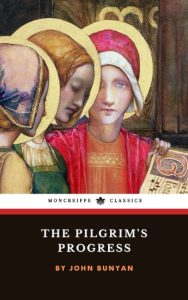The Pilgrim’s Progress: A Classic Book of Christian Allegory by John Bunyan
The Pilgrim’s Progress by John Bunyan is a classic work of Christian literature that has captivated readers for centuries. In this timeless allegory, the hero, Christian, embarks on a journey from his homeland of the City of Destruction to the Celestial City. Along the way, he encounters many trials and tribulations – both physical and spiritual – as he strives to reach his destination. This edition of The Pilgrim’s Progress features an introduction by C.S. Lewis, along with helpful endnotes and illustrations provided by artist Frank Craig. For those looking for an unforgettable adventure story that also serves as an exploration of faith and morality, The Pilgrim’s Progress is sure to delight. Read on to learn more about this timeless classic!


